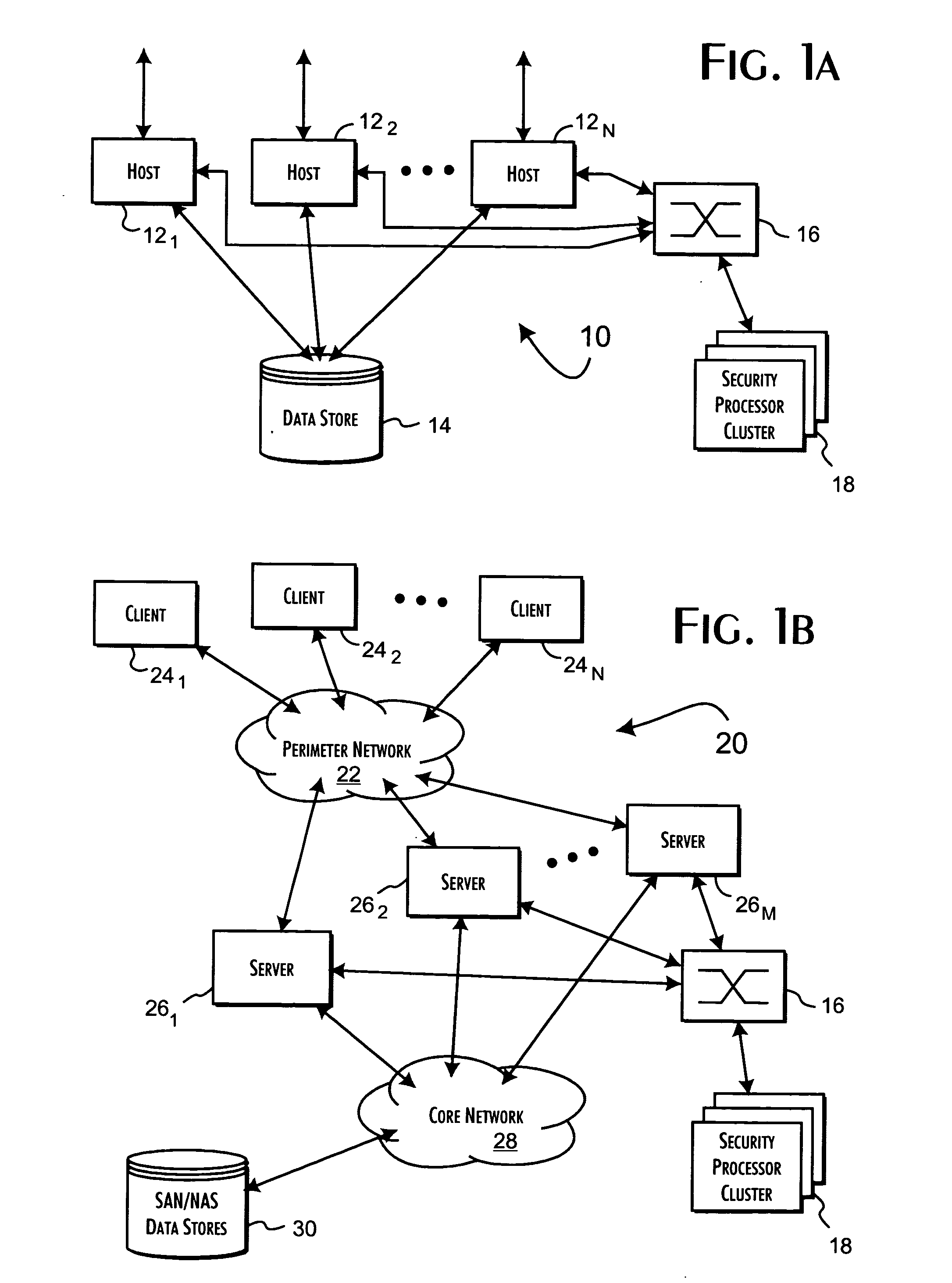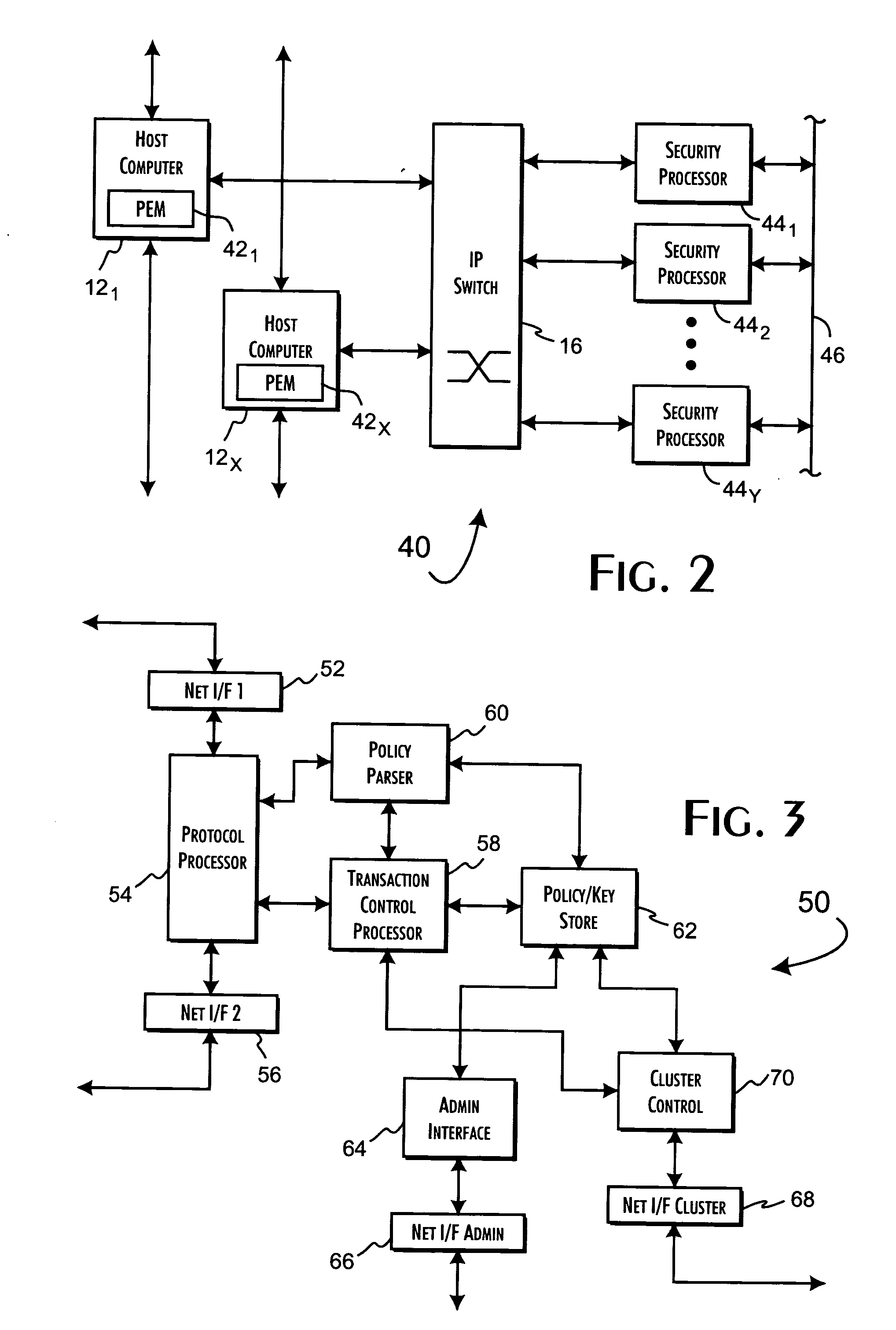System and methods of cooperatively load-balancing clustered servers
a cluster server and load-balancing technology, applied in the direction of program control, multi-programming arrangements, instruments, etc., can solve the problems of no direct way to scale the performance of the dispatcher, no loss of performance, so as to avoid the complexity and delay of opening and operating multiple network connections to share load information, the effect of effective load-balancing
- Summary
- Abstract
- Description
- Claims
- Application Information
AI Technical Summary
Benefits of technology
Problems solved by technology
Method used
Image
Examples
embodiment 10
[0038] A basic and preferred system embodiment 10 of the present invention is shown in FIG. 1A. Any number of independent host computer systems 121-N are redundantly connected through a high-speed switch 16 to a security processor cluster 18. The connections between the host computer systems 121-N, the switch 16 and cluster 18 may use dedicated or shared media and may extend directly or through LAN or WAN connections variously between the host computer systems 121-N, the switch 16 and cluster 18. In accordance with the preferred embodiments of the present invention, a policy enforcement module (PEM) is implemented on and executed separately by each of the host computer systems 121-N. Each PEM, as executed, is responsible for selectively routing security related information to the security processor cluster 18 to discretely qualify requested operations by or on behalf of the host computer systems 121-N. For the preferred embodiments of the present invention, these requests represent ...
embodiment 20
[0039] An alternate enterprise system embodiment 20 of the present invention implementation of the present invention is shown in FIG. 1B. An enterprise network system 20 may include a perimeter network 22 interconnecting client computer systems 241-N through LAN or WAN connections to at least one and, more typically, multiple gateway servers 261-M that provide access to a core network 28. Core network assets, such as various back-end servers (not shown), SAN and NAS data stores 30, are accessible by the client computer systems 241-N through the gateway servers 261-M and core network 28.
[0040] In accordance with the preferred embodiments of the present invention, the gateway servers 261-M may implement both perimeter security with respect to the client computer systems 141-N and core asset security with respect to the core network 28 and attached network assets 30 within the perimeter established by the gateway servers 261-M. Furthermore, the gateway servers 261-M may operate as appl...
PUM
 Login to View More
Login to View More Abstract
Description
Claims
Application Information
 Login to View More
Login to View More - R&D
- Intellectual Property
- Life Sciences
- Materials
- Tech Scout
- Unparalleled Data Quality
- Higher Quality Content
- 60% Fewer Hallucinations
Browse by: Latest US Patents, China's latest patents, Technical Efficacy Thesaurus, Application Domain, Technology Topic, Popular Technical Reports.
© 2025 PatSnap. All rights reserved.Legal|Privacy policy|Modern Slavery Act Transparency Statement|Sitemap|About US| Contact US: help@patsnap.com



